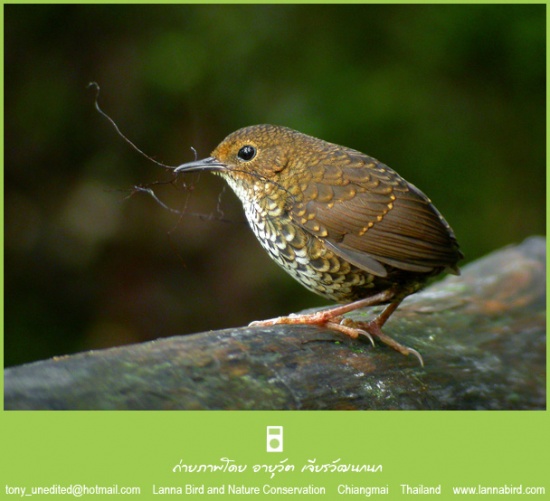(Photo caption. Bird son added) |
m |
||
| Line 31: | Line 31: | ||
'''<font color="#00FF33" style="background-color: black">•</font>''' ''P. p. everetti''; year-round<br /> | '''<font color="#00FF33" style="background-color: black">•</font>''' ''P. p. everetti''; year-round<br /> | ||
'''<font color="#FF6600" style="background-color: black">•</font>''' ''P. p. timorensis''; year-round<br /> | '''<font color="#FF6600" style="background-color: black">•</font>''' ''P. p. timorensis''; year-round<br /> | ||
| − | '''<font color="#FFFF33" style="background-color: black">•</font>''' ''P. p. formosana''; year-round (now full species: [[Taiwan Wren-Babbler]]<br /> | + | '''<font color="#FFFF33" style="background-color: black">•</font>''' ''P. p. formosana''; year-round (now full species: [[Taiwan Wren-Babbler]])<br /> |
<font size="1">Maps/Texts consulted<sup>[[#References|1]],[[#References|2]]</sup></font> | <font size="1">Maps/Texts consulted<sup>[[#References|1]],[[#References|2]]</sup></font> | ||
|} | |} | ||
Revision as of 07:30, 20 August 2011
Alternative names: Brown Wren-Babbler; Lesser Scaly-breasted Wren-Babbler
- Pnoepyga pusilla
Identification
With 7.5 - 9cm a tiny, almost tailless Babbler with two morphs.
Pale morph:
- From crown to rump greyish olive-brown with dark scaling
- Head side greyish olive-brown too, ear-coverts with pale shaft streaks
- Chin and throat white with narrow scaling
- Breast and belly white with scaly effect
Dark morph:
- Darker olive brown above
- White below replaced with ochre
Can be confused with Scaly-breasted Wren-Babbler or Nepal Wren-Babbler where ranges overlap.
Distribution
| Found in SE-Asia. In the Himalayas from Nepal over Sikkim and Bhutan to NE India, including Hill States, Myanmar and to S China. Also in Indochina, S Vietnam, S Thailand and the Malay Peninsula, Sumatra, Java, Flores and West Timor Common in parts of its range. | |
| Legend • P. p. pusilla; year-round |
Taxonomy
Clements3 accepts seven subspecies:
- P. p. pusilla in the Himalayas, Myanmar, China and N Thailand
- P. p. annamensis in Cambodia and S Vietnam
- P. p. harterti in S. Thailand and on the Malay Peninsula
- P. p. lepida on Sumatra
- P. p. rufa on Java
- P. p. everetti on Flores
- P. p. timorensis on Timor
The form of Timor may merit full species status.1
Habitat
Floor and understorey of broadleaf evergreen forest, mossy boulders, fallen logs, forest ravines, dense fern growth. Generally found between 200 and 3050m. Found in similar habitat like Scaly-breasted Wren Babbler but on lower altitudes.1
Behaviour
More often heard than seen.
Resident species with some local altitudinal movements.1
Diet
Forages on the ground, sometimes up to 2m in trees, feeding on ants, other insects and spiders.
Breeding
Breeding season differs through range, March to September in northern parts, July to May in Java, November to December in Sumatra. The nest is a ball of moss or a built-in structure made of long strands of green moss, the inner part formed to a cup. It's placed in moss, orchids, ferns or creepers hanging down from large trees, close to the ground. Lays 2 - 6 eggs.
Vocalisation
<flashmp3>Pygmy Wren Babbler Moxi.mp3</flashmp3>
Listen in an external program
Recorded by china guy, Sichuan, China, August 2011
References
- Del Hoyo, J, A Elliott, and D Christie, eds. 2007. Handbook of the Birds of the World. Volume 12: Picathartes to Tits and Chickadees. Barcelona: Lynx Edicions. ISBN 978-8496553422
- Rasmussen, PC and JC Anderton. 2005. Birds of South Asia: The Ripley Guide. Barcelona: Lynx Edicions. ISBN 978-8487334672
- Clements, JF. 2010. The Clements Checklist of Birds of the World. 6th ed., with updates to December 2010. Ithaca: Cornell Univ. Press. ISBN 978-0801445019. Spreadsheet available at http://www.birds.cornell.edu/clementschecklist/Clements%206.5.xls/view
Recommended Citation
- BirdForum Opus contributors. (2024) Pygmy Cupwing. In: BirdForum, the forum for wild birds and birding. Retrieved 3 June 2024 from https://www.birdforum.net/opus/Pygmy_Cupwing





